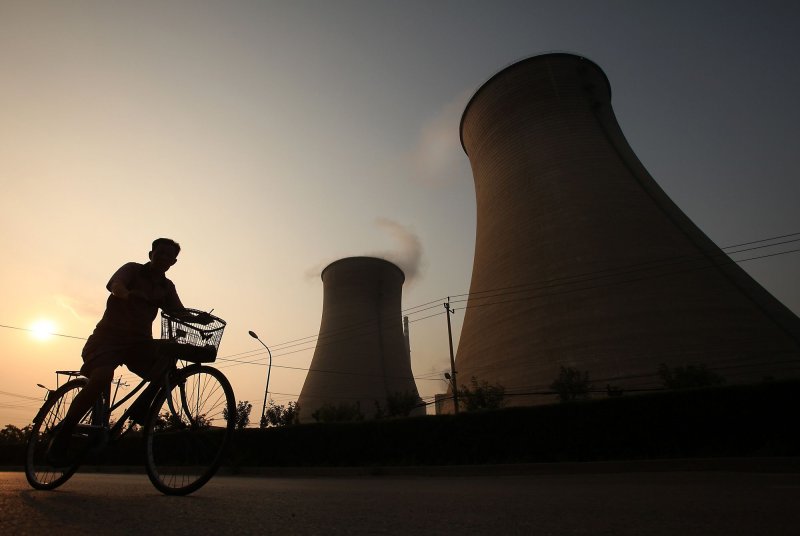1 of 2 | A cyclists rides by a coal-powered energy plant in Beijing on July 21, 2010. UPI/Stephen Shaver |
License Photo
LONDON, Aug. 24 (UPI) -- Global coal demand and consumption is set to continue rising over the next two decades despite parallel moves to switch to green and renewable energies.
The outlook for coal demand, highlighted in a new report from Dublin's Research and Markets, coincides with a U.S. study that predicted coal production worldwide could begin to peak in 2011.
Despite growth in global data about green and renewable energy and frequent accounts of how governments and corporations are moving toward adoption of clean energy, both for politics and profit, ecologically friendly energy usage remains minuscule when compared with coal consumption.
Coal is still the principal fuel for electricity production. World coal consumption, about 6.7 billion tons in 2006, is set to reach about 10 billion tons this year.
China produces about 70 percent of its electricity from coal, while the United States deploys 90 percent of the coal it consumes -- some 14 percent of the world total -- in electricity production.
About 40 percent of the world electricity production uses coal, giving rise to frequent prognoses that supplies may run out faster than originally estimated.
Research and Markets said coal consumption is projected to grow about 2.5 percent per year over the next 20 years.
That outlook contrasts with questions being raised over the impact of the recession on major coal players in Australia, Canada, Germany, Russia, South Africa, Turkey and the United States.
The economic downturn has already led to consolidation in the global coal industry affecting private and public sector investment, production and prices.
Much of recent research has focused on making coal more user friendly -- even "green" -- in today's environmentally conscious domain.
The report cited clean coal technologies such as underground coal gasification, coal washing, advanced pollution control, carbon dioxide capture and separation processes, and carbon sequestration from CO2 storage.
Meanwhile, a study by Tadeusz W. Patzek of the University of Texas and Gregory D. Croft of the University of California said a global peak in coal production from existing coalfields could occur "close to" 2011.
It said production rates and CO2 emissions from existing coal fields, including new mines that aren't yet exploited, could begin to decline after that period, reaching 1990 levels by 2037 and 50 percent of the peak value in 2047.
Future mines are unlikely to reverse this trend, the authors said. However, they said, peak coal could be deferred if technological breakthroughs radically change the nature of coal extraction.
Carbon capture and sequestration technologies could help to reduce emissions during the 2010-20 period, Patzek and Croft said.
The report isn't the first to predict an imminent peak in coal production. In 2007 the Energy Watch Group produced a study that predicted that Chinese coal output will peak in 2015 -- now widely rated as an unlikely event because of China's huge coal yield, new discoveries and improved extraction practices.















